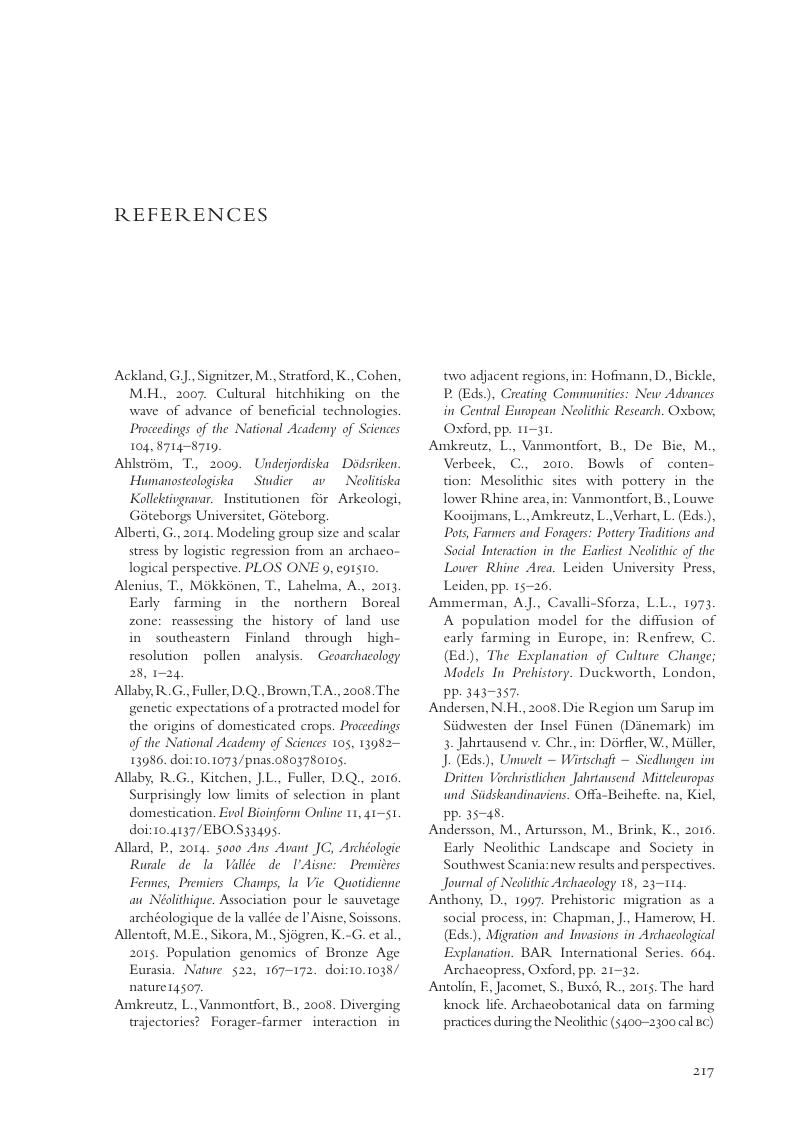Book contents
- The First Farmers of Europe
- Cambridge World Archaeology
- The First Farmers of Europe
- Copyright page
- Dedication
- Contents
- Figures
- Preface and Acknowledgements
- Chapter 1 Introduction: Population, Resources and Life Histories
- Chapter 2 The Origins of Agriculture in South-West Asia
- Chapter 3 The First Westward Expansion of Farming
- Chapter 4 The Spread of Farming into Central Europe
- Chapter 5 Maritime Expansion in the Central and West Mediterranean
- Chapter 6 Continental Temperate Europe 7000–5500 BP: Internal Expansion and Adaptation
- Chapter 7 First Farmers in Southern Scandinavia
- Chapter 8 The Farming Colonisation of Britain and Ireland
- Chapter 9 Conclusion: Evolutionary Patterns and Processes
- Notes
- References
- Index
- References
References
Published online by Cambridge University Press: 20 April 2018
- The First Farmers of Europe
- Cambridge World Archaeology
- The First Farmers of Europe
- Copyright page
- Dedication
- Contents
- Figures
- Preface and Acknowledgements
- Chapter 1 Introduction: Population, Resources and Life Histories
- Chapter 2 The Origins of Agriculture in South-West Asia
- Chapter 3 The First Westward Expansion of Farming
- Chapter 4 The Spread of Farming into Central Europe
- Chapter 5 Maritime Expansion in the Central and West Mediterranean
- Chapter 6 Continental Temperate Europe 7000–5500 BP: Internal Expansion and Adaptation
- Chapter 7 First Farmers in Southern Scandinavia
- Chapter 8 The Farming Colonisation of Britain and Ireland
- Chapter 9 Conclusion: Evolutionary Patterns and Processes
- Notes
- References
- Index
- References
Summary

- Type
- Chapter
- Information
- The First Farmers of EuropeAn Evolutionary Perspective, pp. 217 - 245Publisher: Cambridge University PressPrint publication year: 2018



